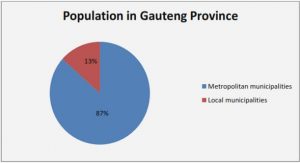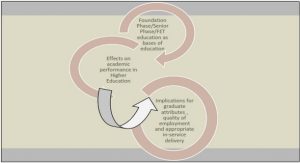Get Complete Project Material File(s) Now! »
Jesus’ Background – His Family and Upbringing
Initially, Meier draws attention to the names of Jesus and his family – here it specifically pertains to the cultural features of myths of common ancestry, shared “historical” memories, and to a lesser extent, religion. In the case of Jesus himself, our English form of Jesus’ name is derived from the Hebrew name Yesu (Meier 1991:205-207). This is the shortened form of the more correct Yesua, which in turn was a shortened form of the name of the Biblical hero Joshua, in Hebrew Yehosua. The latter, in keeping with usual ancient Hebrew names, was a theophoric name that originally meant “Yahweh helps or “May Yahweh help”. The later popular etymology had the name to mean “Yahweh saves” or “May Yahweh save” (cf Mt 1:21). Jesus’ name may signify something else within the context of first-century Galilee. When we come to the family of Jesus it is probably not by accident that like Jesus himself, his family members have names that hark back to the patriarchs, the exodus from Egypt, and entrance into the promised land. Jesus’ putative father was Joseph,1 who had the name of one of the twelve sons of Jacob/Israel and who was the progenitor, through Ephraim and Manasseh, of two of the twelve tribes. His mother was Mary, in Hebrew Miriam, the name of Moses’ sister. His four brothers were named after the patriarchs who fathered the twelve sons/tribes of Israel (James = Jacob) and after three of the twelve sons (Joses = Joseph, Simon = Simeon, and Jude = Judah). Jesus also had at least two, but unnamed sisters.2 For most of the Old Testament period Israelites were not named after the great patriarchs mentioned in Genesis and Exodus. A change seemingly occurred after the exile and accelerated around the time of the Maccabean revolt against the Seleucid king Antiochus IV Epiphanes (reigned 175-164/163 BCE) who attempted to Hellenise Judeans and suppress Judean religious and ethnic customs. It was especially Judeans in rural areas and small towns of Palestine that reacted towards the Seleucid persecution with escalating native-religious feeling.
Meier (1991:208) also states that it “may not be too farfetched to suggest that we hear an echo of this theme of national restoration [of Israel] years later when the adult Jesus chooses precisely twelve men to be his inner group of disciples. The number twelve was probably meant to conjure up the idea of the twelve patriarchs, the twelve tribes, and hence the restoration of all Israel by Joshua/Jesus of Nazareth”. We will return to the issue of Jesus’ restoration of Israel and the twelve disciples later. The matter of Jesus’ language is what Meier (1991:255-268) discusses next.3 Most researchers are today convinced that Aramaic was the normal everyday language spoken by the average first-century Judean in Israel. As a teacher who directed his message at ordinary Judean peasants, whose everyday language was Aramaic, he basically spoke to and taught his fellow Judeans in Aramaic. Some traces of it remain embedded in the text of the Greek Gospels (Mk 5:41; 7:34; 14:36; 15:34). The Aramaic that Jesus used has been identified as a Galilean version of western Aramaic, which was distinct in some ways from the Aramaic spoken in Judea. Apart from Aramaic, however, Jesus would also have known some Hebrew and Greek. Jesus’ habit of preaching in the synagogues and debating with scribes and Pharisees on scriptural matters makes it likely that he some knowledge of Biblical Hebrew. Jesus would have learned Hebrew in the Nazareth synagogue or a nearby school. In addition, in his woodworking establishment, Meier speculates, Jesus may have had opportunities to also pick up enough Greek to strike bargains and write receipts. This must be seen in combination with regular pilgrimages by his family to Jerusalem, which was exposed to Hellenistic culture, where the young Jesus would have been exposed to Greek culture and language. So it might be that Jesus was able to speak enough Greek to speak directly with Pilate at his trial.4
Summary: John D Crossan – Jesus A Mediterranean “Jewish” Peasant
Crossan’s reconstruction has very little that connects Jesus with traditional Judean ethnicity in the first century. (Of course, Crossan’s historical Jesus would stand in continuity with his notion of inclusive Hellenistic Judeanism.) Jesus appears more as a peasant Mediterranean philosopher than a peasant Judean prophet or sage, and his Judean background is stretched very thin over the ethos of the Roman-Hellenistic empire. Where continuity exists is Jesus’ faith in God, but not the God peculiar to Israel as such, since Greeks and Romans can also know God albeit under different names. Nazareth was also a Judean village, but it must be seen as in cultural continuity with Sepphoris and its Hellenised traditions. In addition, Jesus illustrates a strong community solidarity with socially marginalized Judeans, but one gets the impression this is ideologically not reserved for Judeans alone. There is an openness that could potentially even include the “sinners” and the Gentiles.
Besides the above, after Jesus was baptised by John, Jesus broke away from his eschatological message and concerned himself with the brokerless kingdom of God that is available in the present. It involves those people who place themselves under divine rule – it is not dependent on a nation or place. Jesus challenged the legitimacy of the Temple’s spiritual (and communal and ritual) power and engages in religious banditry. Through Jesus’ healings/magic, he is placed on par or even above the authority of the Temple, and he implicitly forgives the beneficiaries their sins. He touches lepers and makes them “clean”, and so serves as an alternative or negation of the Mosaic purity regulations. In fact, he ignores purity rules. In open commensality, Jesus shows he has no interest in making appropriate distinctions and discriminations. He negates the value of food taboos and table rituals. Judeans of different classes and sexes are free to eat together, their ritual status being irrelevant. When magic and meal come together, the “mission” of Jesus (and his followers) to enact the brokerless kingdom requires a peculiar dress code, in some ways similar (yet different) to Greco-Roman Cynicism. Jesus and his followers are (barefoot?) itinerants as opposed to the localised Temple. Jesus serves as the Temple’s functional opponents and its substitute – by implication, also to the Torah in some respects. When Jesus was in Jerusalem he symbolically destroyed it and said he would destroy it beyond repair. Jesus was also against the brokered and patriarchal family. He brought division between the generations, and set a wife against her husband – similar tension Jesus experienced with his own family. Jesus sets up an alternative kinship pattern based on egalitarian principles. Lastly, Jesus moved within the ambience of inclusive Hellenistic Judeanism’s synthesis of Judean and Gentile tradition. Inclusive Judeanism recognised that it had common ground with some Gentile traditions, such as the understanding of God and questions of morality. Overall, Jesus a peasant Judean Cynic, who sets the kingdom – a religious and economic egalitarianism not dependent on place or nation – in opposition to the Mediterranean and Judean ethos of honour and shame, patronage and clientage.
1. IDENTIFYING THE PROBLEM
1.1 Introduction
1.2 John P Meier – Jesus a Marginal “Jew”
1.3 John D Crossan – Jesus a Mediterranean “Jewish” Peasant
1.4 Identifying the Problem
2. A SOCIO-CULTURAL MODEL OF JUDEAN ETHNICITY: A PROPOSAL
2.1 Introduction
2.2 Covenantal Nomism
2.3 Covenantal Nomism as a “Symbolic Universe”
2.4 The Four Pillars of Second Temple Judeanism
2.5 Judean Customs as Covenantal Praxis
2.6 Ethnicity Theory
2.7 Ethnicity in Antiquity
2.8 The Socio-Cultural Model of Judean Ethnicity: A Proposal
2.9 So What Kind of Judean Was Jesus?
3. JUDEAN ETHNICITY IN FIRST CENTURY CE
3.1 Introduction
3.2 The “Sacred Canopy”
3.3 What’s in a Name?
3.4 Judeanism Encounters Hellenism
3.5 Religion and Covenantal Praxis
3.6 In Pursuit of the Millennium
3.7 Kinship
3.8 What of the Gentiles?
4. WHO WERE THE GALILEANS?
4.1 Introduction
4.2 The Galileans as Descendants of Northern Israelites
4.3 Galilee After the Assyrian Conquest
4.4 The Settlement of Galilee in the Late Hellenistic Period
4.5 The Cultural Continuity Between Judea and Galilee
4.6 Galilee and Judeanism: Other Evidence
4.7 Woe to Chorazin, Bethsaida and Capernaum
4.8 Sepphoris and Tiberias
4.9 Hellenisation and the Use of Greek in Galilee
4.10 Galilee During and After the Great Revolt
4.11 Findings
5. JUDEAN ETHNICITY IN Q
5.1 Introduction
5.2 The Approach to Q
5.3 Judean Ethnicity in Q
5.4 Thesis: The Reconstruction of Judean Ethnicity in Q






